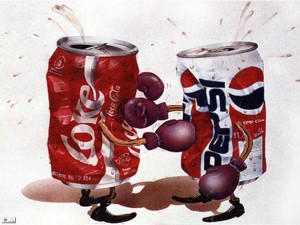The Indian Act was enacted in 1876 and allowed the federal government of Canada to control aboriginal affairs. This act has since been amended and at the 2012 annual meeting of the Assembly of First Nations, National Chief Shawn Atleo called on Ottawa to repeal the Indian Act. He suggested the government replace it with a new arrangement that would allow aboriginals to move forward on resource sharing and land claims. These land claims are a controversial topic in business as they can greatly impact a company’s business model, as well as touch on business ethics.
A recent article in the Vancouver Sun, titled “Tsilhqot’in set to declare site of New Prosperity mine a tribal park,” reports that a First Nation in British Columbia is set to declare a large portion of the Chilcotin as a tribal park. This includes the site of the proposed New Prosperity mine at Fish Lake.
On one hand, the aboriginal’s of this area have long opposed mining and a tribal park would protect cultural, heritage and ecological values. Therefore, a question on whether it would be ethically correct to mine in this location can be raised. On the other hand, Taseko Mines Ltd.’s Fish Lake property is part of a $1.1 billion New Prosperity copper-gold project and lies outside the title area recognized by courts. What would a land claim like this mean for Taseko Mines?
First of all, a conflict with the Tsilhqot’in people would present itself as an external factor impacting Taseko Mines’ business model. Without the New Prosperity mining site, Taseko Mines would lose millions of dollars in revenue and their business would be directly impacted.
However, this is not the first time a company’s progress has been held back by the traditional values and beliefs of aboriginals. For instance, in 2011, the Simpcw First Nation halted plans to sign a rights and title agreement with a mining company when Simpcw bands blockaded an access road northeast of Kamloops.
In such disagreements, it is impossible for both parties to get exactly what they want. Therefore, it is essential that both firms and First Nations try to cooperate and achieve a mutual understanding. If First Nations can accept gradual and sustainable industrial progress and firms like Taseko Mines can respect the traditional value the land holds, mutual agreements are possible.
Works Cited
“First nation blockade of B.C. mine stalls aboriginal exploration deal.” The Globe and Mail. N.p., 10 Aug. 2011. Web. 6 Oct. 2014.
Montpetit, Isabelle. “Background: The Indian Act.” CBCnews. CBC/Radio Canada, 14 July 2011. Web. 5 Oct. 2014.
Pynn, Larry. “Tsilhqot’in set to declare site of New Prosperity mine a tribal park.” www.vancouversun.com. N.p., 11 Sept. 2014. Web. 7 Oct. 2014.


